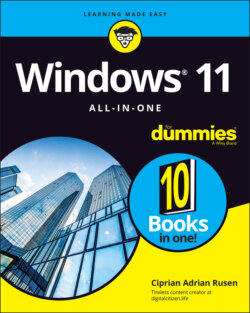Читать книгу Windows 11 All-in-One For Dummies - Ciprian Adrian Rusen - Страница 42
Fine-tuned virtual desktops
ОглавлениеWindows has had virtual (or multiple) desktops since Windows XP, but before Windows 10, you had to install a third-party app — or something like Sysinternals desktop from Microsoft — to get them to work. Windows 11 implements virtual desktops (see Figure 2-11) in a way that is useful and a bit less confusing than in Windows 10. For example, virtual desktops in Windows 11 no longer include the timeline from Windows 10.
FIGURE 2-11: Task view displays all the multiple desktops you’ve set up.
You can name virtual desktops any way you want and change their desktop background, to help you keep track of which is which. It took Microsoft a long time to realize that this tiny improvement makes a world of difference.
Multiple desktops are handy if you tend to multitask. You can set up one desktop to handle your mail, calendar, and day-to-day stuff, and another desktop for your latest project or projects. Got a crunch project? Fire up a new desktop.
To start a new desktop, press Win+Ctrl+D. To see all available desktops, click or tap the task view icon on the taskbar (to the right of the search icon). App windows can be moved between desktops by right-clicking and choosing Move To. Alt+Tab still rotates among all running windows. Clicking or tapping an icon in the taskbar brings up the associated program, regardless of which desktop it’s on.
You learn how to use virtual desktops in Book 3, Chapter 1.
